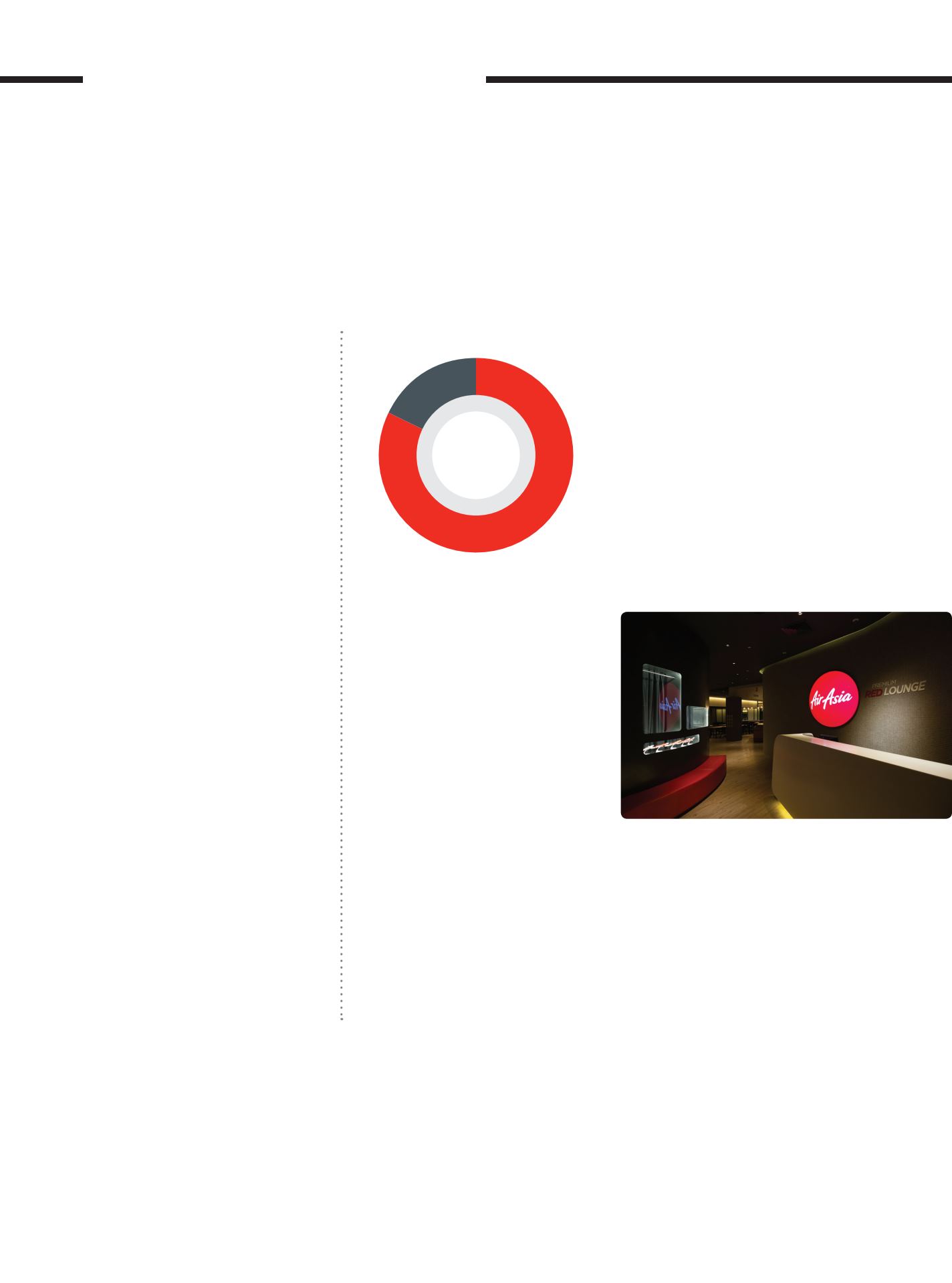

AIRASIA X:
FLYING WITH THE X FACTOR
The year 2017 marked the 10th
anniversary of our long-haul sister
airline, AirAsia X, one which it was able to
celebrate in great style – with flights to
Honolulu just a few months before the
event, and a second full-year of profits a
few months after.
The launch in June of Kuala Lumpur-
Osaka-Honolulu was a veritable milestone
for AirAsia X as it marked the airline’s
entry into an entirely new continent, North
America. This route, moreover, was made
possible only after AirAsia X passed a
stringent safety audit conducted by the
US Federal Aviation Administration (FAA).
Until very recently, no other LCC in Asean
could lay claim to having FAA approval.
For guests, Hawaii is a dream destination
come true; it has a strong appeal among
Asians above a certain age who grew up
with images of sandy beaches, rolling
waves and surf boarders from the long-
running TV programme Hawaii Five-0.
Honolulu was, and is, without doubt
special. It was also an exception in
another important respect. A conscious
decision had been made by AirAsia X as
a Group to grow its presence in its core
markets, namely North Asia and India.
Other than Honolulu, therefore, all four
other destinations launched in the year
– Wuhan and Jeju, from Kuala Lumpur;
as well as Tokyo and Mumbai, from Bali –
targeted these markets, as did increased
flight frequencies. AirAsia X Malaysia’s
new destinations and increased
frequencies led to a 21% growth in its
capacity, enabling it to carry 25% more
guests year-on-year to total 5.8 million
while upping its load factor by three
percentage points to 82%, its highest to
date.
Although there was a slight dent in yields
as a result of such aggressive capacity
expansion, this was a small price to pay
for the long-term benefits of market
dominance. And, for the year, the drop
in revenue per available seat kilometre
(RASK) was more than compensated for
by the 30% increase in revenue from
ancillary and 27% increase in freight
service. Ancillary income was boosted
by increased contributions from baggage
allowance and seat selection, which
benefited from more dynamic pricing
structures, as well as uptake of the newly
launched Xcite Inflight Entertainment, the
AirAsia Premium Red Lounge at klia2, and
AirAsia Duty Free & Merchandise. Freight
services, meanwhile, were enhanced
by increased capacity for cargo along
with AirAsia X’s capacity expansion more
generally. Overall, AirAsia X Berhad’s
revenue increased by 17% to RM4.6 billion.
CAPACITY
+21
%
NO. OF SCHEDULED
FLIGHTS A WEEK
237
REVENUE
+17
%
LOAD FACTOR
82
%
[ ]
AirAsia Group Berhad
BUSINESS REVIEW
134


















